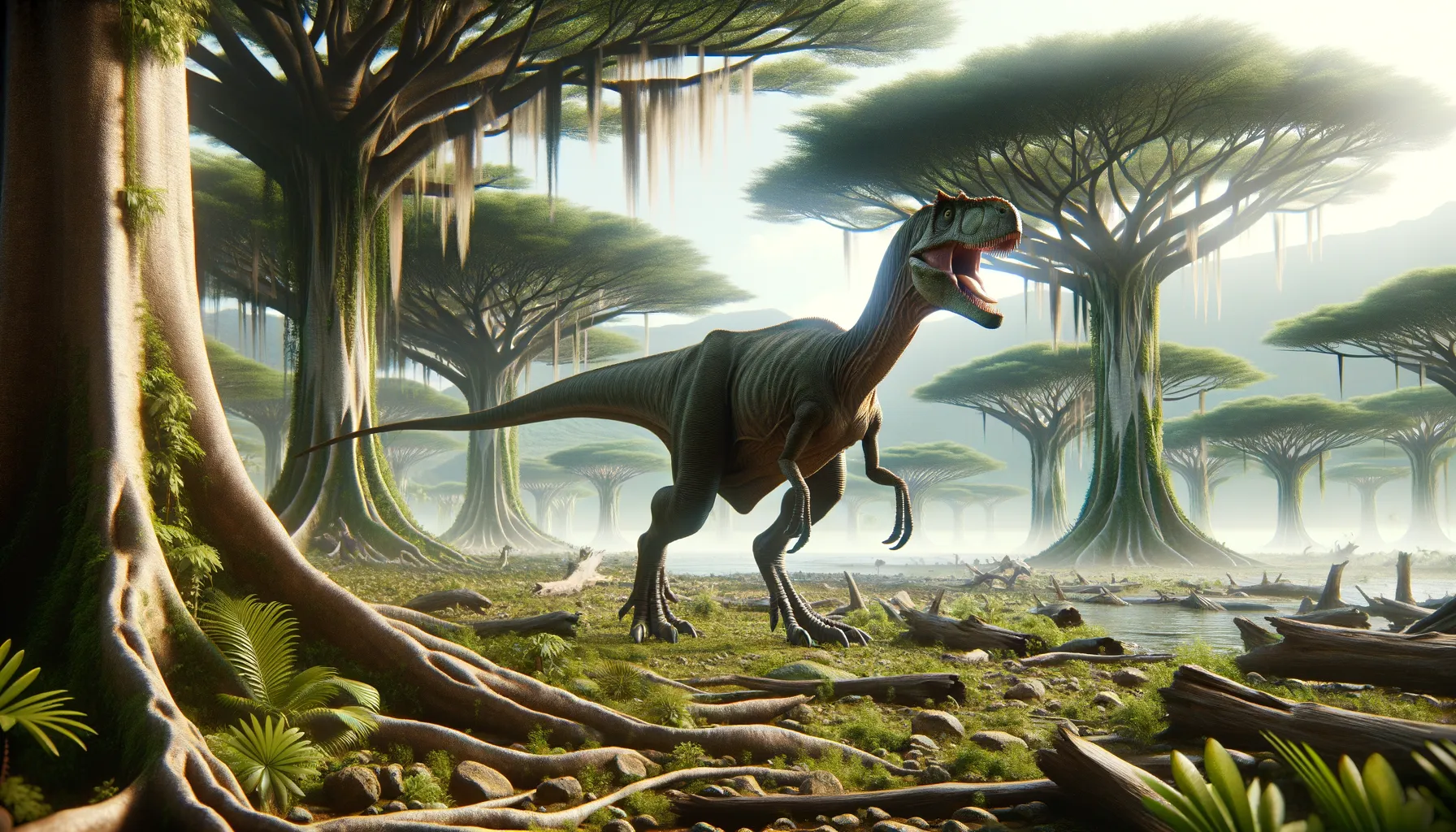
Elaphrosaurus
The swift hunter of the Jurassic era
Period
Jurassic
Length
It measured about 6 to 7 meters long.
Height
It stood approximately 1.8 meters tall.
Weight
It weighed about 450 kilograms.
Elaphrosaurus was a lightweight and nimble theropod dinosaur that roamed the Late Jurassic period. Known for its speed and agility, it possessed long, slender legs suited for swift movement. Though primarily seen as a predator, its exact diet is still debated among scientists. The remains of Elaphrosaurus were first unearthed in Tanzania, marking it as a significant discovery in the understanding of African dinosaur fauna.
Diet
Elaphrosaurus is believed to have been a carnivore. It likely preyed on small animals and possibly scavenged for food. Despite this, some experts suggest it might also have had an omnivorous component to its diet.
Hunting
Elaphrosaurus used its speed and agility to catch prey. It might have hunted alone, relying on stealth and quick bursts of speed to surprise its prey. Given its size, it likely targeted smaller animals or reptiles.
Environmental challenges
Elaphrosaurus lived during a time of significant environmental changes where food sources could be unpredictable. It had to compete with other predators for resources, which may have posed a challenge. Its small size compared to larger predators possibly made survival more difficult. These challenges necessitated adaptability in its diet and hunting strategies.
Speed
Elaphrosaurus was a fast runner due to its slender build.
Lifespan
It likely lived around 10 to 15 years.
First discovery
Elaphrosaurus was first discovered in Tanzania in 1910.
Fun Facts
- Elaphrosaurus was a lightweight dinosaur that lived during the Late Jurassic period, around 150 million years ago.
- Unlike many other theropod dinosaurs, Elaphrosaurus was more adapted for running than for hunting large prey.
- Elaphrosaurus means 'light-footed lizard,' which is a nod to its agile and speedy nature.
- Fossils of Elaphrosaurus have been found in Africa, specifically in Tanzania, highlighting the rich prehistoric life of the continent.
- Elaphrosaurus had a long neck and long legs, which helped it to move quickly and look out for potential threats or food.
- Despite its classification as a theropod, recent studies suggest it might have been an omnivore, not just a meat-eater.
Growth and Development
Elaphrosaurus likely experienced rapid growth in its early years to quickly reach a size that would protect it from predators. Its development was marked by the elongation of its limbs, which were crucial for its survival. Juveniles probably had to learn survival skills quickly in an environment full of predators. As it matured, its body developed features ideal for fast movement.
Habitat
Elaphrosaurus inhabited open landscapes, likely preferring savannah-like environments. These habitats offered wide spaces ideal for running and hunting. This dinosaur might have needed proximity to water sources, which attracted prey and provided hydration. Its habitat was shared with other dinosaur species, including larger predators.
Interaction with other species
Elaphrosaurus had to coexist with larger carnivorous dinosaurs, often avoiding confrontations. It might have interacted with herbivorous dinosaurs, either competing for resources or preying on their young. Social hierarchies and friendships among its own species would have been essential for reproductive success. Such interactions possibly included both cooperative behavior and competition.
Natural lifespan
Elaphrosaurus might have lived up to 15 years under natural conditions.
Reproduction
Elaphrosaurus, like other theropods, would have laid eggs. It likely had some form of nesting behavior, potentially building nests on the ground. The young would have been vulnerable to predators, requiring some form of parental protection. Reproductive success would have depended on nesting site selection and the survival rates of the young.
Social behaviour
Elaphrosaurus may have lived in small groups or pairs to aid in hunting or protection. Social interactions likely involved establishing territories or hierarchies within their groups. Communication through vocalizations or visual displays could have been part of their social behavior. Cooperative hunting or protection strategies might have been employed within groups.
Fossil locations
The first fossils of Elaphrosaurus were found in the Tendaguru Formation of Tanzania. This area has provided significant insight into the dinosaurs of the Late Jurassic period. Additional discoveries have been sparse, making each find important for understanding its distribution. Ongoing research may uncover more locations to broaden our knowledge of its range.
